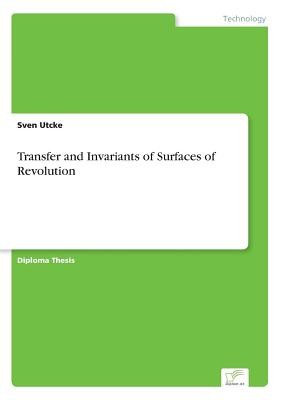
- We will send in 10–14 business days.
- Author: Sven Utcke
- Publisher: Diplom.de
- Year: 2001
- Pages: 100
- ISBN-10: 3838631021
- ISBN-13: 9783838631028
- Format: 14.8 x 21 x 0.6 cm, softcover
- Language: English
- SAVE -10% with code: EXTRA
Reviews
Description
Inhaltsangabe: Abstract: A number of papers in the Computer Vision and Pattern Recognitionliterature have demonstrated that invariants, or equivalently structure modulo a 3D linear transformation, are sufficient for object recognition. The final stage in the recognition process is verification, where an outline is transferred from an acquisition image of the object to the target image. For the most part recognition based on invariants has concentrated on planar objects, though some 3D invariants have been measured from single and multiple images for polyhedra, point sets, surfaces of revolution and algebraic surfaces. The work so far on surfaces of revolution has only exploited isolated points on the outline (such as bitangents), and has not addressed transfer or verification. This thesis, for the first time, extends the transfer and extraction of invariants to surfaces of revolution using the entire outline. Given a single view of the surface, it is possible to obtain the projection in any other given view, given a minimal number of points in the target image. In particular it is is possible to reconstruct the generating curve, and thereby a rich set of invariants. Zusammenfassung: Eine Reihe von Veröffentlichungen in der Bildverarbeitungs- und Mustererkennungsliteratur hat gezeigt, dass Invarianten, oder alternativ Struktur Modulo einer 3D linearen Transformation, die Erkennung von Objekten aus Bildern ermöglicht. Der letzte Schritt im Erkennungsprozess ist die Verifikation, in der eine Kontur einer exemplarischen Ansicht des Objektes in das Bild zurückprojeziert wird. Die Invarianten-basierte Erkennung hat sich im wesentlichen auf ebene Objekte beschränkt, wenngleich einzelne 3D Invarianten für Polyeder, Punkt-Mengen, rotationssymmetrische Objekte und algebraische Oberflächen existieren. Die bisherigen Arbeiten für rotationssymmetrische Objekte haben sich auf einzelne Punkte der Kontur (z.B. Bi-Tangenten) beschränkt und das Problem der Rückprojektion un
EXTRA 10 % discount with code: EXTRA
The promotion ends in 18d.21:10:52
The discount code is valid when purchasing from 10 €. Discounts do not stack.
- Author: Sven Utcke
- Publisher: Diplom.de
- Year: 2001
- Pages: 100
- ISBN-10: 3838631021
- ISBN-13: 9783838631028
- Format: 14.8 x 21 x 0.6 cm, softcover
- Language: English English
Inhaltsangabe: Abstract: A number of papers in the Computer Vision and Pattern Recognitionliterature have demonstrated that invariants, or equivalently structure modulo a 3D linear transformation, are sufficient for object recognition. The final stage in the recognition process is verification, where an outline is transferred from an acquisition image of the object to the target image. For the most part recognition based on invariants has concentrated on planar objects, though some 3D invariants have been measured from single and multiple images for polyhedra, point sets, surfaces of revolution and algebraic surfaces. The work so far on surfaces of revolution has only exploited isolated points on the outline (such as bitangents), and has not addressed transfer or verification. This thesis, for the first time, extends the transfer and extraction of invariants to surfaces of revolution using the entire outline. Given a single view of the surface, it is possible to obtain the projection in any other given view, given a minimal number of points in the target image. In particular it is is possible to reconstruct the generating curve, and thereby a rich set of invariants. Zusammenfassung: Eine Reihe von Veröffentlichungen in der Bildverarbeitungs- und Mustererkennungsliteratur hat gezeigt, dass Invarianten, oder alternativ Struktur Modulo einer 3D linearen Transformation, die Erkennung von Objekten aus Bildern ermöglicht. Der letzte Schritt im Erkennungsprozess ist die Verifikation, in der eine Kontur einer exemplarischen Ansicht des Objektes in das Bild zurückprojeziert wird. Die Invarianten-basierte Erkennung hat sich im wesentlichen auf ebene Objekte beschränkt, wenngleich einzelne 3D Invarianten für Polyeder, Punkt-Mengen, rotationssymmetrische Objekte und algebraische Oberflächen existieren. Die bisherigen Arbeiten für rotationssymmetrische Objekte haben sich auf einzelne Punkte der Kontur (z.B. Bi-Tangenten) beschränkt und das Problem der Rückprojektion un


Reviews